Is your bum sore from sitting all day? What to do when cushions don’t work
Working from home is the new normal. Don’t forget to take care of your glutes – especially if you’re the skinny type. Here are some tips.
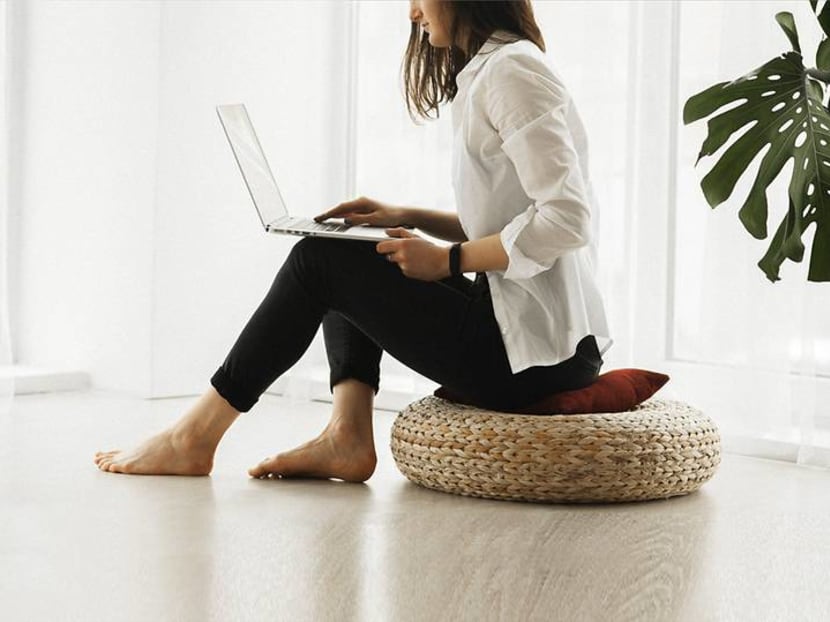
(Photo: Unsplash)
When work-from-home was first implemented, many of us looked forward to sitting on our comfortable beds or couches for the day. It sure beats the office chair, doesn’t it?
But while lounging around for hours might seem like a great thing, it can have unexpected consequences on your long-term physical wellbeing – specifically on your glutes.
Some of us might have started to notice some soreness around the posterior, perhaps even while sitting on a cushion. Others might start to feel an ache in the same area on the rare occasion we’re standing up or walking around the house.
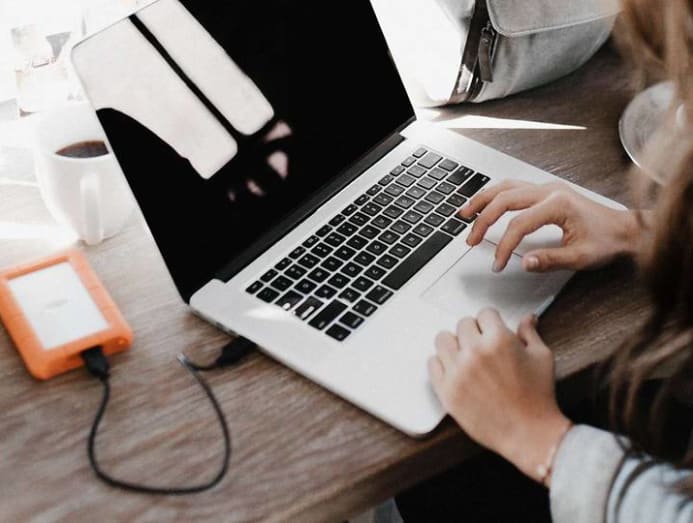
Sitting around for extended periods can even cause issues in other parts of the body, specifically the back.
Who knew sitting down could literally be a pain in the backside? CNA Lifestyle spoke to several experts to find out more about taking care of your glutes, and what you can do to help tone up those cheeks.
READ: Is binge-watching giving you a backache? Here’s how to prevent it
HIDDEN DANGERS OF SITTING
According to John Abraham, the managing director of RapidPhysiocare, people who sit for longer periods of time are more at risk of obesity, as you burn fewer calories when sitting. He said that studies have shown that people with obesity sit for an average of two hours longer each day than people with a normal weight.
He added that sitting for too long is also linked to early death. “Observational data from more than one million people reveals that the more sedentary you are, the more likely you are to die early,” he said.
Other possible health problems include risk of health conditions like type 2 diabetes, heart disease, and cancer.
Fred Chen, principal musculoskeletal physiotherapist at Physio & Sole Clinic, also brought up the possibility of increased body fluid accumulation in the lower limbs and reduced blood circulation.
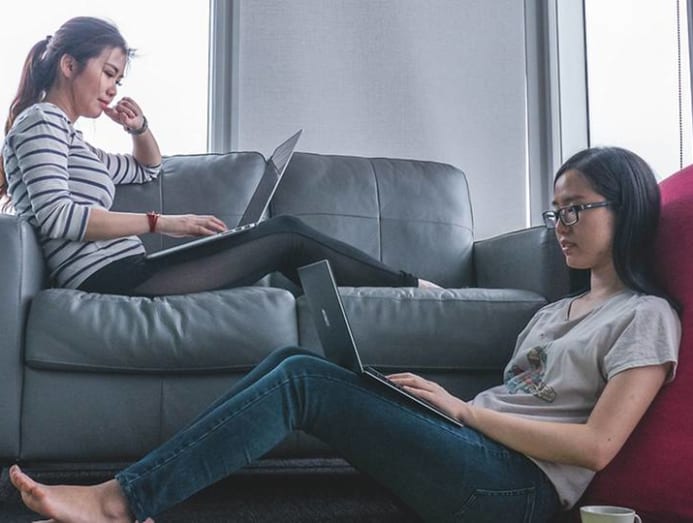
Chen said that for the elderly, or people with heart, renal or venous problems, it is common to experience lower limb swelling after prolonged sitting without leg elevation. This may cause deep vein thrombosis (DVT) or other vascular complications.
READ: If sitting is bad for our health, should we be squatting more instead?
Signs of DVT include swelling, cramping pain or soreness of the legs – it can also be fatal if not treated promptly.
ESCAPING THE SEDENTARY LIFESTYLE
Abraham said that patients who come to him with glute-related symptoms are those whose work involves sitting down for long periods of time, like bus drivers or office workers.
Another possible cause of glute soreness is a sedentary lifestyle, something many of us are getting acquainted with right now.
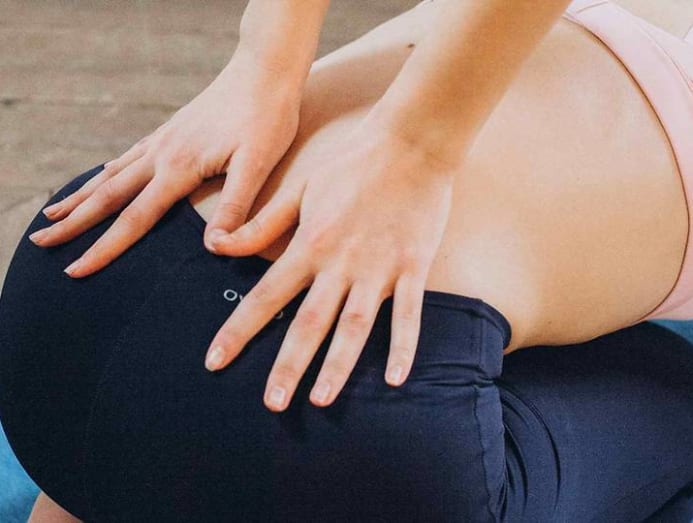
The first, and most straightforward, step to alleviate that soreness is to change one’s habit, he said.
“A sedentary lifestyle causes soreness and tightness in the gluteal muscles and hip flexors when they lengthen and tighten. So, you need to avoid sitting for too long in the same position. Start walking and practising some mild stretching,” he said.
READ: Simple tweaks to your routine at home and the office can help ease your back pain
Chen added that another cause of soreness is sitting on the wrong kind of surface, such as one that is too hard, like a wooden surface.
Additionally, skinny people might actually be more at risk of getting sore glutes.
“Skinny people who do not have enough soft tissue and fat on their buttocks may get soreness easily, as there is inadequate pressure distribution and the pressure falls directly on the sitting bone (ischial tuberosity) or tailbone (coccyx),” said Chen.
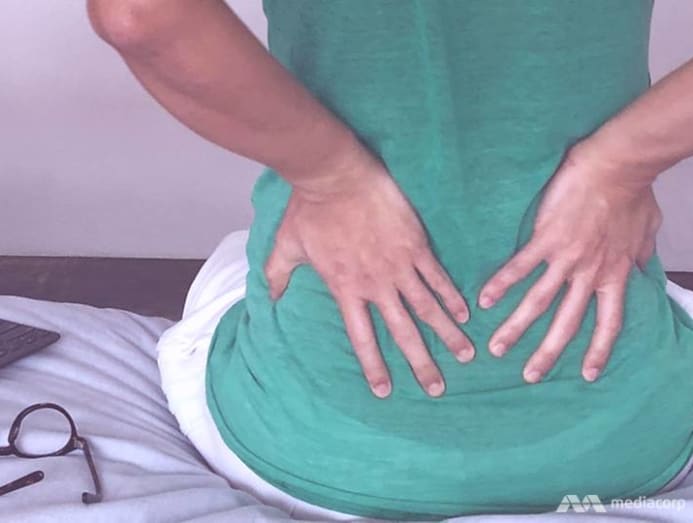
To solve the problem, Chen suggested two methods.
First, he recommended getting a cushion that is neither too hard nor too soft, and suggested a donut-shaped cushion for people experiencing pain in their tailbone.
The other method is to physically tone up one’s glutes.
GETTING IN SHAPE
Doing basic exercises throughout the week can do wonders. One of the exercises Abraham recommended is the glute squeeze.
Stand with your feet about hip-width apart and your knees slightly bent. Pull your abdominal muscles in and hold your shoulders back while you squeeze your glutes tightly for about 4 seconds. Then relax your glutes slowly for one full repetition. Aim for 3 sets of 10 repetitions.
Next, hamstring stretches. Stand with your left leg in front of your right. With your right leg slightly bent and your left leg straight, bend slightly at the waist until you feel a slight pull on your left hamstring. Hold for 10 seconds, then switch legs. Then work up to holding the stretches for 30 seconds at a time.
READ: Feeling tired while working from home? 5 easy exercises to boost your energy
Chen’s favourite exercise is “bridging”, specifically “double bridging”.
To carry out the exercise, lie facing up, with your knees bent and feet flat on the ground. Keep your arms at your side with your palms down. Lift your hips off the ground until your knees, hips and shoulders form a straight line. Squeeze your glutes hard and keep your abs drawn in so you do not overextend your back during the exercise.
The exercise can also be modified to harder versions such as bridging with your heels raised, single leg bridging or bridging with weights.
Another exercise he suggested is a side-lying hip abduction. Lie on your side with the bottom knee bent, stabilise your upper body and pelvis. Keep your upper knee straight and lift up the whole leg. Try to keep the leg in line with your body – your leg should not move forwards or backwards of your body.
You can do both these exercises in 10-20 reps, 2-3 sets daily depending on your physical capacity.
But what about if you have no choice but to sit down for most of the day for work?
According to Abraham, you can minimise the effects even while sitting down by watching your posture.
“Adjust your chair, so your hips are slightly above your knees, feet resting flat on the floor. Ensure your lower back is supported, either by a sturdy chair back, or a pillow. Keep your shoulders relaxed, but upright, and head directly over the shoulders” he said.
“The screen of your computer should be eye level or slightly below. Make sure you’re close enough to the desk.”
“Lastly, create some breaks into your day to walk around and reset yourself,” he added.





